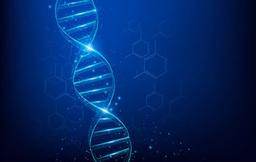Feel free to use or edit a copy
includes Teacher and Student dashboards
Measure skillsfrom any curriculum
Measure skills
from any curriculum
Tag the questions with any skills you have. Your dashboard will track each student's mastery of each skill.
With a free account, teachers can
- edit the questions
- save a copy for later
- start a class game
- automatically assign follow-up activities based on students’ scores
- assign as homework
- share a link with colleagues
- print as a bubble sheet
29 questions
Show answers
- Q1Which scientist(s) created the 3D structure of the DNA modelRosalind FranklinOswald AveryJames Watson and Frances CrickRobert Hooke45s
- Q2What is the full name of DNA?deoxyribonucleic acidDNAribonucleic acid45s
- Q3Which of the following does NOT make up a nucleotide?phosphatenucleusnitrogenous basesugar45s
- Q4Which base is only found in DNA?adenineuracilguaninethymine45s
- Q5Which of the following is NOT different between RNA and DNA?uracil vs thyminesingle vs double strandprotein vs nucleic acidribose vs deoxyribose sugars45s
- Q6Which scientist(s) used bacteriophages to determine that DNA was the genetic material?Rosalind Franklin and Maurice WilkinsJames Watson and Francis CrickAvery OswaldAlfred Hershey and Martha Chase45s
- Q7adenine:thymine as guanine:________________nitrogenous baseDNAuracilcytosine45s
- Q8The process that copies a DNA strand into an RNA strand for protein synthesis is calledprotein synthesisDNA replicationtranslationtranscription45s
- Q9Translation occurs in thenucleusribosomecell membranecytoplasm45s
- Q10Which scientist coined the term "transforming principle"?James WatsonAvery OswaldFrederick GriffithGregor Mendel45s
- Q11If given the DNA sequence AAGGATCCA, what is the mRNA sequence?UUCCUAGGAAGGAUCCAUUUUACGUUGCGAUUAGC60s
- Q12The shape of a DNA strand can be best described asnucleic acidtwo-strandeddouble helix45s
- Q13Which scientist(s) built upon Frederick Griffith's experiment to discover that DNA is the genetic material?Alfred Hershey and Martha ChaseRosalind Franklin and Maurice WilkinsOswald AveryRobert Hooke45s
- Q14The central dogma of biology states that genetic information moves fromProteins --> RNA --> DNARNA --> DNA <-- ProteinsDNA --> RNA --> ProteinsDNA --> Proteins --> RNA45s
- Q15Which type of RNA makes up the ribosomes?mRNADNArRNAtRNA45s
